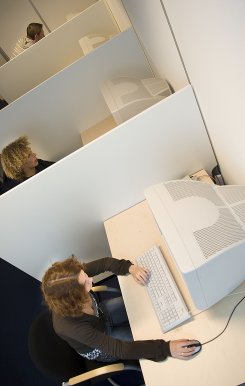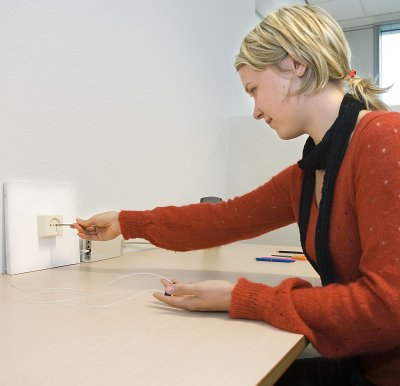Multi-person Labs
The EBL has ten Multi-person Labs in use for a variety of experiments.
On the one hand, the Multi-person Labs can be used for behavioural experiments in management and economics. Most of these are computer-based and do not require participants to be isolated, for example experiments that seek to measure individual responses to representations of power. Other experiments might not need computers, like those requiring participants to construct miniature models out of given sets of building blocks after reading a task that evaluates another model, to measure the influence of different kinds of task descriptions on performance and creativity.
On the other hand, the Multi-person Labs support psychological research on autonomous measures. Autonomous measures are an important part of psychological research after cognition and emotion. With autonomous measures the automatic and partly unconscious bodily responses to stimuli can be registered. This results in more exact information about human functioning than for instance questionnaires. A research participant can deny being anxious in a certain circumstance, while his bodily responses clearly indicate anxiety. The bodily responses are expressed in activity of sweat glands (skin conductance, GSR), respiration, heart beat rate, muscle tension, or eye blinks (startle). The autonomous measures are employed in a large range of psychological research, like in biological psychology, social psychology and clinical psychology, and also in marketing for understanding affective reactions to products and advertisements. This equipment is also in use in the EBL.
There are six 4-person labs and four 2-person labs in the EBL. View more EBL photos.

A computer experiment in a 4-person lab

An experiment about irrational fear in a 2-person lab


